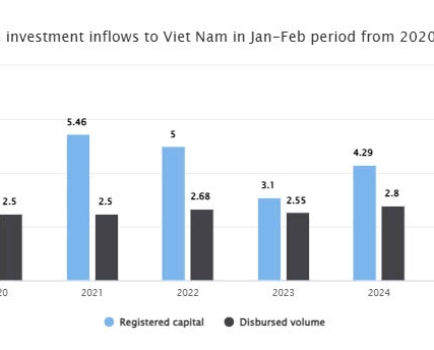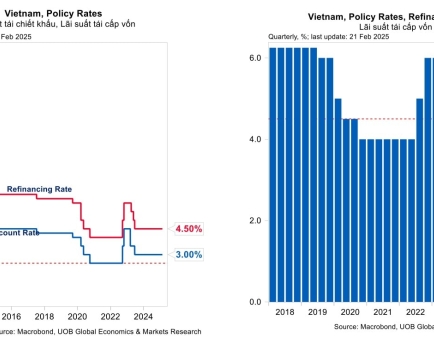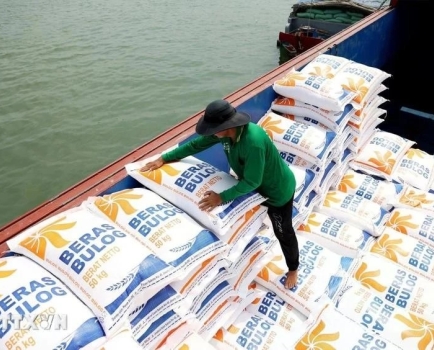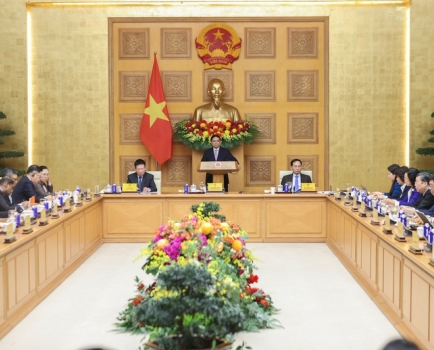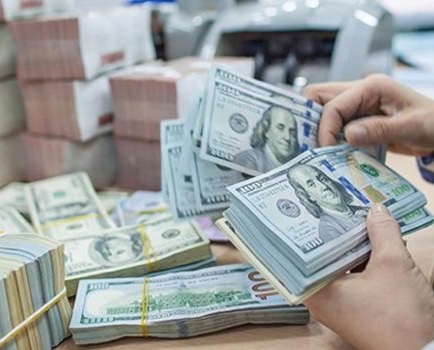Four directions set for foreign currency credit
Wed, 05 Jun 2019 15:12:00 | Print | Email Share:
VOV.VN - The State Bank of Vietnam has implemented a road map to guide the flows of foreign currency credit into four directions in a bid to deal with rising exchange rates.
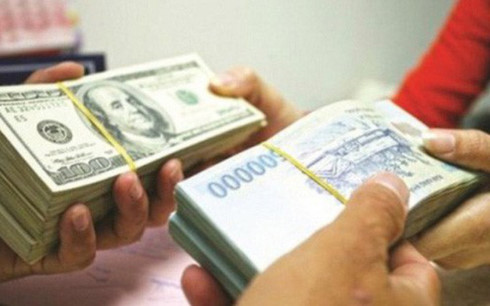
Medium and long-term loans are allowed to make overseas payments
for the import of goods and services if borrowers are likely to reimburse
loans from the foreign currency sourced from their revenues until
September 30, 2019 (Illustrative photo: VOV)
According to Vietnam Economic Times, the recent central rates of VND versus USD announced by the State Bank of Vietnam (SBV) have hit peak levels. This could be caused by a number of internal factors amid the signs of a trade deficit.
Vietnam had constantly enjoyed trade surpluses between 2011 and 2018. However, during the eight-year period, the country still sustained trade deficits in four quarters. Of note, the third and fourth quarters of 2018 saw trade deficits, economic expert Le Xuan Nghia said.
Exports raked in US$58.51 billion in the first quarter of 2019, edging up by 4.7 per cent on year. This yielded a modest trade surplus worth US$536 million, much lower than the US$2.7 billion figure from the corresponding period last year.
"The ongoing US-China trade tensions are still escalating, subsequently posing the high risk of a currency war. Meanwhile, Vietnam’s trade balance has shown signs of weakening, thus hampering exchange rates," Nghia said.
In fact, the exchange rate of USD/VND jumped by 80 VND at commercial banks from May 20-24 while the central rate increased by 12 VND in the reviewed period. In general, the USD/VND exchange rate has upped by 0.8 per cent since early May.
Tensions and the added pressure of increasing exchange rates are forecast to further weaken the VND. This could trigger the hoarding of foreign currency and increasing dollarization.
In order to implement the Government’s policy on gradually curbing dollarization and easing difficulties for domestic production and exports, the SBV has mapped out four directions to control foreign currency credit flows. It is also looking to reduce borrowing costs, increase domestic firms’ competitiveness, and facilitate their participation in regional and global supply chains.
Firstly, the central bank sets no time limit on short-term loans to meet the domestic demand for foreign currency to boost the production and business of exports via border gates. The second one is to keep on providing short-term foreign currency loans to make payments to foreign sellers.
Thirdly, the SBV plans to end short-term loans to make payments for overseas sellers in order to deploy a scheme to enhance the production of and trade of goods for the domestic market. This is on the condition that borrowers are able to ensure enough foreign currency to repay loans after March 31, 2019.
Finally, medium and long-term loans are allowed to make overseas payments for the import of goods and services if borrowers are likely to reimburse loans from the foreign currency sourced from their revenues until September 30, 2019.
By: VOV
---------------------------------------------
Same category News :



